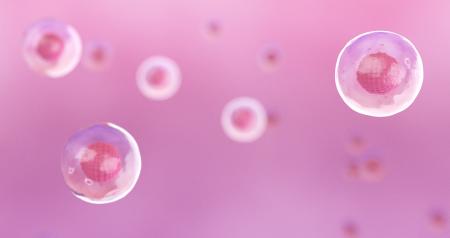Treating Stroke with stem cells
Strokes are classified into two types: ischemic and hemorrhagic. Ischemic stroke is caused by a blood clot blocking an artery supplying blood to part of the brain. The result is damage to the brain tissue supplied by that artery. Ischemic strokes occur when a blood vessel becomes blocked due to atherosclerosis, a buildup of plaque inside the arteries. A hemorrhagic stroke is caused by bleeding within the brain.
Fortunately, the therapeutic action of stem cells has been proven to be very effective in helping ischemic stroke patients to recover.
Depending on which part of the brain was affected and how long the brain lacked blood flow during the stroke event, stroke patients are facing three main challenges:
- Loss of cognitive function, including thinking, understanding and reasoning, speaking, writing and reading, can be significant. Memory loss and changes in behavior, such as becoming more withdrawn or depressed, are also challenges patients deal with post-stroke.
- Loss of physical function is evident in most cases. Chronic numbness and tingling, loss of muscle movement and control, loss of balance, coordination, and physical function are frequent. Partial paralysis is also frequent.
- The cognitive and physical disability that often occurs post-stroke significantly changes people's quality of life. Loss of independence, a needing of constant assistance is a serious challenge patients often deal with.
Regenerative stem cell therapy for Stroke
A safe and effective way way to help restore the quality of life of chronic stroke patients is to address these challenges in parallel, using stem cell based therapies simultaneously with full body restoration, detoxification and physical therapy.

Stroke Treatment Plan
Our treatment plans generally last between 2 and 5 weeks, depending on your overall health, your condition, and the severity of your Stroke symptoms. Anyone can sign up for stem cell treatment for Stroke. Each stem cell treatment candidate will receive a tailored plan to help achieve the highest success rate for maximum therapy efficiency. Typically, stem cell therapy for Stroke will resemble a program such as the one below, and will last for 4 weeks.

Stem cells
20 stem cell IVs

Plurisomes
5 Plurisomes IVs

Peptides & Nutraceuticals
20 IVs

Chelation
regular CaNa2 EDTA IVs

Ozone
4 sessions

Physiotherapy & Massage
8 sessions
Treatments
- Anti-Aging
- Alzheimer's disease
- Arthritis
- Back Pain
- Brain Injury
- Cerebral Palsy
- COPD
- Diabetes
- Fibromyalgia
- Heart disease
- Knees
- Guillain Barré Syndrome
- Lyme disease
- Multiple Sclerosis
- Neck Pain
- Nerve Damage
- Neuropathy
- Opioid Addiction
- Pain Management
- Parkinson's disease
- Post-Viral Syndrome
- Pulminary Fibrosis
- Rheumatoid Arthritis
- Scleroderma
- Shoulder Pain
- Facelift
- Stroke
- Treated by Stem Cells

Benefits of stem cell therapy for Stroke patients
Because we utilize the type of stem cells that we can culture in our laboratory, instead of extracting mesenchymal stem cells (adult stem cells) from the patient's bone marrow or adipose tissue, we completely avoid the potential risk factors or adverse events associated with these invasive cell-removal procedures.
With pluripotent stem cell transplantation, it is possible to achieve neurological recovery and functional recovery of lost body functions. With each injection, self-healing mechanisms are triggered and the patient's brain starts to produce new connections and reactivation of neural stem cells.
-
Immune
The first of many therapeutic effects from the pluripotent stem cell treatment is immunoregulation. Ischaemic stroke is an injury to brain tissue, and resulting inflammation can worsen the repair process and even cause further brain injury. Clearing runaway inflammation is step one in the healing process. Stem cells and their exosomes release immune and transcription factors that help restore healthy immune function in the brain.
-
Cognition
The secondary benefit from the regular administration of stem cell doses is a gradual return of cognitive function. This may occur 14 days after cell injection or take longer, depending on seriousness and location of the stroke. Pluripotent stem cells release neurotrophic factors, angiogenic and growth factors, and help restore neural cell connections in the brain between sites of brain injury and patient's own neural stem cells in the brain.
-
Mobility
Pluripotent stem cells and Plurisomes are cellular therapies for the treatment of stroke that signal repair in all tissues of the body. As the brain begins to repair, communication with the rest of the body begins to gradually improve and muscle movement and control begins to restore. This is followed by the beneficial effects of balance, coordination and overall improvement in mobility. Results vary patient to patient.


